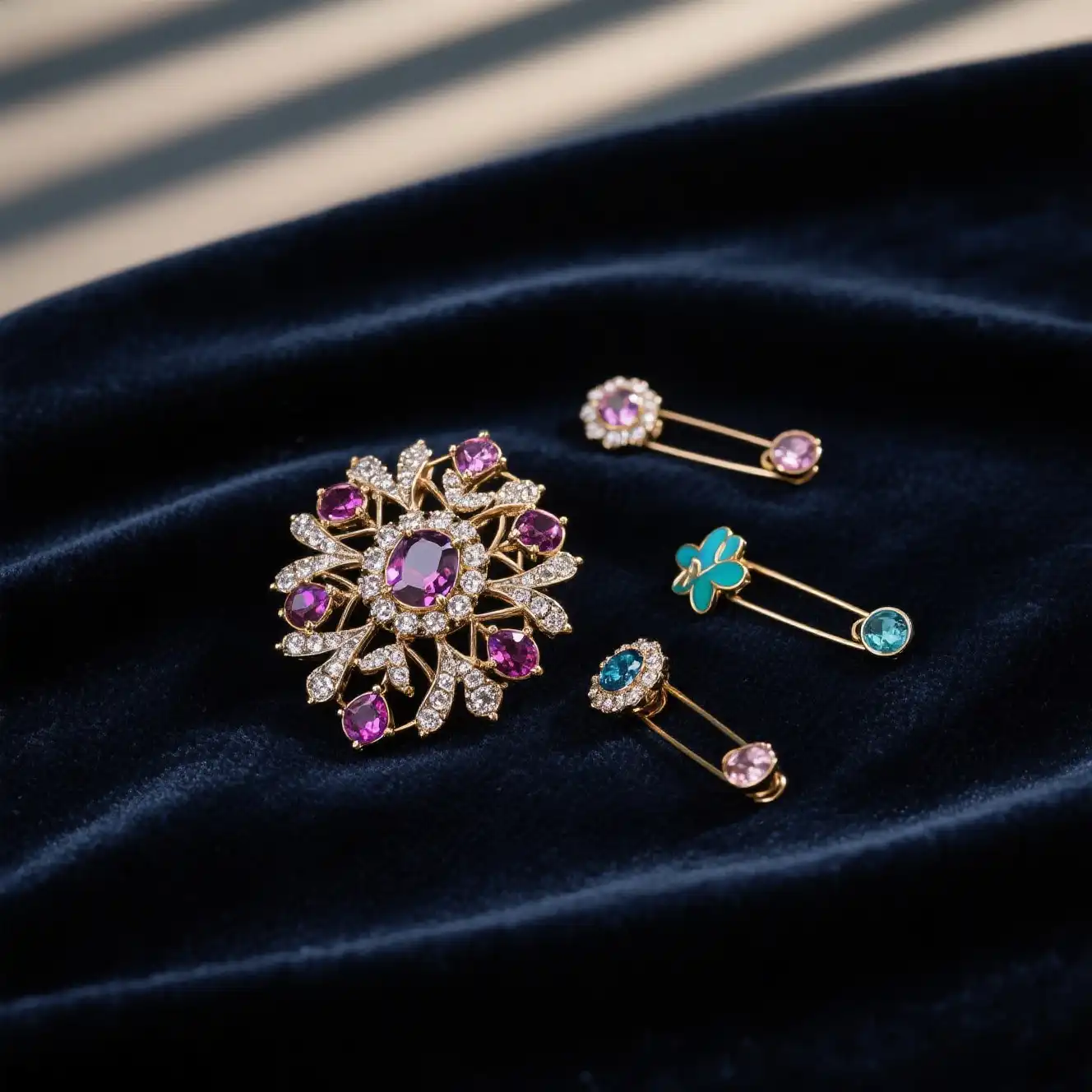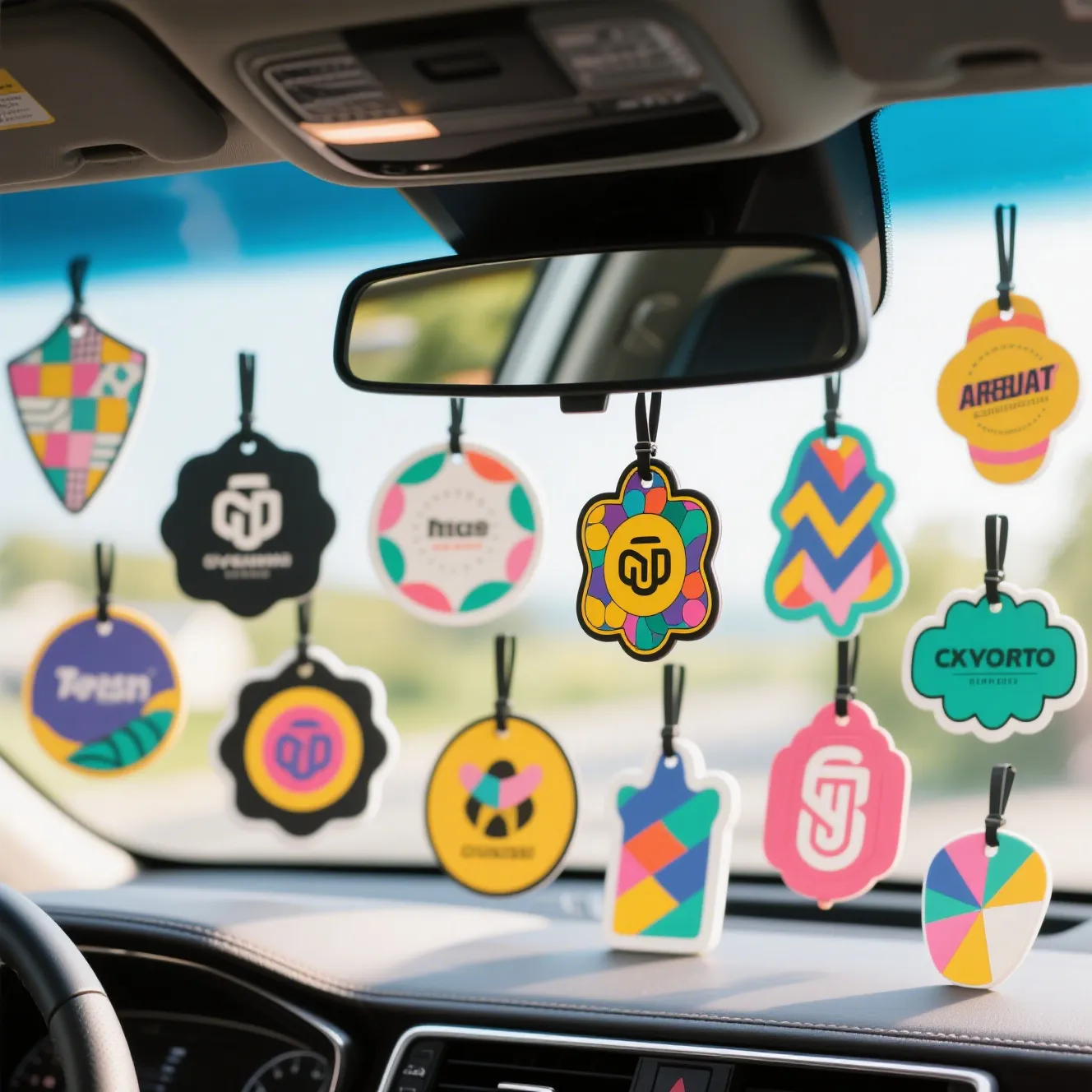The Complete 2025 Guide
If you’ve ever admired a sparkling brooch on a jacket or noticed a sleek pin on a lapel, you might have wondered: what’s the real difference between a brooch and a pin? While these terms are often used interchangeably, especially in today’s fashion world, they each have a unique story, purpose, and style. By the end of this guide, you’ll not only understand the difference between a brooch and a pin, but also how to choose, wear, and even customize these timeless accessories for yourself or as a meaningful gift.

What Is a Brooch?
A brooch is a decorative jewelry item designed to be attached to garments, often to fasten them together or simply to add flair. Traditionally crafted from metals like gold or silver and often adorned with gemstones, enamel, or intricate designs, brooches have been cherished accessories since the Bronze Age4. In ancient times, brooches—also called fibulae—served both practical and ornamental purposes, acting as fasteners and symbols of status or allegiance.
Brooches are typically larger, more ornate, and intended to make a statement. Over centuries, they have evolved from practical cloak fasteners to symbols of elegance and artistry, gracing the lapels, collars, and hats of royalty and fashion icons alike24.
What Is a Pin?
A pin, in the context of jewelry, is a broader term that refers to any accessory with a pointed metal shaft and a clasp, designed to attach to clothing. Pins can be purely functional—like safety pins, hat pins, or tie pins—or decorative, such as lapel pins or commemorative badges.
While all brooches are technically pins, not all pins are brooches. Pins can be simple and utilitarian or small and symbolic, often used for identification, affiliation, or subtle decoration. Modern pins include everything from enamel pins representing pop culture to elegant lapel pins worn at formal events.
Brooch vs Pin: Key Differences
| Feature | Brooch | Pin |
|---|---|---|
| Purpose | Primarily decorative, sometimes functional | Functional, decorative, or symbolic |
| Design | Ornate, larger, often with gemstones or enamel | Simple or small, can be decorative or utilitarian |
| Usage | Fashion statement, fastening garments, adornment | Fastening, identification, awards, subtle flair |
| Attachment | Pin and clasp mechanism, usually larger | Pin and clasp, often smaller and lighter |
| Examples | Cameos, floral brooches, vintage gemstone pieces | Lapel pins, tie pins, safety pins, badges |
| Tradition | Associated with women’s fashion, vintage style | Unisex, used in uniforms, ceremonies, fashion |
Brooches are always decorative, while pins may serve a purely practical purpose or be used for identification. All brooches are pins, but not all pins are brooches.
The History and Evolution of Brooches and Pins
Brooches are among the oldest forms of jewelry, dating back to ancient civilizations. Early brooches were made from bone, flint, or metal and used to secure clothing. As metalworking advanced, brooches became more elaborate, evolving into status symbols and works of art.
In the Middle Ages and Renaissance, brooches were often encrusted with precious stones and worn by nobility. In the Victorian era, brooches became sentimental keepsakes, featuring miniature portraits, locks of hair, or symbolic motifs.
Pins, meanwhile, have a more functional origin. They were used to fasten garments, secure hats, or display affiliations. Over time, pins became collectible items, with enamel pins and badges representing everything from sports teams to social causes.
Types of Brooches
-
Cameo Brooches: Featuring carved portraits or scenes
-
Floral Brooches: Shaped like flowers, often with gemstones
-
Animal Brooches: Butterflies, bees, birds, and more
-
Modern/Abstract Brooches: Contemporary designs and materials
-
Vintage and Antique Brooches: Sought after by collectors for their craftsmanship
Types of Pins
-
Lapel Pins: Small pins worn on jacket lapels, often for identification or fashion
-
Tie Pins: Used to keep neckties in place
-
Hat Pins: Long pins designed to secure hats
-
Safety Pins: Functional pins for fastening
-
Badge Pins: Representing organizations, achievements, or causes
-
Button Pins: Round pins with slogans or images, popular for events and campaigns
How to Wear a Brooch or Pin
Brooches are often the focal point of an outfit. Pin them to the lapel of a blazer, the shoulder of a dress, or even on a hat or scarf for a touch of vintage glamour. They can transform a simple garment into a statement piece.
Pins, on the other hand, can be worn more subtly—on a shirt collar, jacket lapel, bag, or even a hat. They are perfect for expressing personality, affiliations, or achievements without overwhelming your look.
Brooch vs Pin in Modern Fashion
Today, both brooches and pins are enjoying a revival. High-end designers and vintage collectors alike are bringing these accessories back to the spotlight. Brooches are seen on runways and red carpets, while pins—especially enamel pins—are popular among younger generations for self-expression and collecting.
Whether you prefer the bold elegance of a brooch or the understated charm of a pin, both can add personality and meaning to your wardrobe.
Custom Brooches and Pins: The Loongwa Print Advantage
At Loongwa Print, you can create custom brooches and pins for any occasion. Whether you want a personalized gift, a branded accessory, or a unique fashion statement, our print-on-demand service lets you design and order brooches, pins, badges, and more—tailored to your style or brand.
Our custom options include:
-
Full-color printing for vibrant designs
-
Multiple shapes and sizes
-
Durable materials and secure clasps
-
Fast, reliable shipping
Personalized brooches and pins make memorable gifts, event souvenirs, or promotional items for businesses. Explore our collection and start designing your own today.
Real Stories: Brooches and Pins That Make a Statement
“My grandmother’s vintage brooch is my lucky charm. Every time I wear it, I feel connected to her legacy and style.”
— Emily, Loongwa Print customer
“Our company’s custom pins from Loongwa Print were a hit at the conference. People loved the quality and unique design.”
— Alex, Marketing Manager
Difference Between a Brooch and a Pin: FAQ
Q1: Is a brooch the same as a pin?
Not exactly. All brooches are pins, but not all pins are brooches. A brooch is a specific type of decorative pin, usually larger and more ornate.
Q2: What is the main purpose of a brooch?
Brooches are primarily decorative and are used to adorn clothing or fasten garments together. They often feature artistic designs and precious material.
Q3: Are pins only for practical use?
No. While many pins are functional, such as safety pins or tie pins, others—like lapel pins or enamel pins—are decorative and used for self-expression or identification.
Q4: Can men wear brooches?
Absolutely. While brooches have been traditionally associated with women’s fashion, modern trends embrace brooches for all genders, especially in formal or creative outfits.
Q5: How do I choose between a brooch and a pin?
Consider the occasion and your style. Choose a brooch for a bold, decorative statement, or a pin for subtle flair, practical use, or to signify affiliation.
Q6: Can I customize brooches and pins?
Yes! At Loongwa Print, you can design custom brooches and pins for personal, promotional, or commemorative use.
Celebrate Your Style with Brooches and Pins
Understanding the difference between a brooch and a pin unlocks a world of creative possibilities. Whether you’re drawn to the timeless elegance of a brooch or the versatile charm of a pin, both offer a unique way to express yourself, honor tradition, or make a statement.
Ready to design your own? Explore the custom brooch and pin options at Loongwa Print and add a personal touch to your next accessory or gift.
Link
Looking for more custom gift ideas? Discover our full range of personalized badges and keychains at Loongwa Print.


